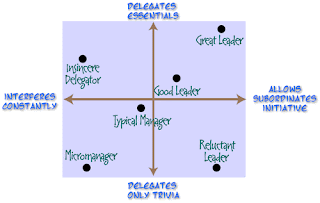A small handful of leadership behaviors disproportionately affect and accelerate rapid movement growth. Without question, one of the most crucial qualities of effective leaders lies in their willingness and ability to delegate well. Delegation requires those of us who lead others to constantly release key aspects of our work to the next generation of volunteers, employees, or family members.
My friend Dela Adadevoh distills delegation down into a continuum. At one end is Eyes On-Hands On delegation. Better known as micromanaging, this lame substitute isn’t delegation at all. With rare exceptions (such as the first few days of orienting a new employee), this path usually leads to the cul-de-sac of frustration (for the leader) and deflated confidence (for the worker). Michael Scott, the Dilbert-esque branch manager on the American hit The Office personifies this approach.
At the other end of the continuum we find Eyes Off-Hands Off delegation. In my experience this results in a sense of abandonment. Most of us say we enjoy having complete freedom to do our jobs. At the same time, if a job is really crucial and thus worth our best effort, our heart longs for someone who’s in charge to take notice. I’ve rarely met a volunteer or employee that will just keep on giving her best month after month with no feedback. Work builds up, motivation sags, and people feel overwhelmed but bored.
Between these extremes lies a wide swath of Eyes On-Hands Off delegation. Good leaders know how to tread lightly in others’ rose gardens while still stopping to smell – and inspect – the roses. Learning to let go of control while offering constructive feedback, affirmation and correction is an art and science. True delegation begins with the leader’s heart. Bill Lawrence, a friend and long-time mentor, says, “I can teach you everything you need to know about delegating in 45 minutes. But those are just skills. True delegation is a heart issue – a question of the will. Will you delegate?“
The long-term impact of our leadership may ultimately be determined by a few key factors. John Mott’s counsel on delegation echoes from my last post: “He who does the work is not so profitably employed as he who multiplies the doers. Count the day lost that you do not do something, either directly or indirectly, to multiply the number of unselfish workers.”
Question for aspiring leaders: How am I doing at multiplying the number of unselfish workers?

2 replies on “The Art and Science of Dela-gation”
Ken do you have that diagram on PDF? Can you send it to my uscm? I really like that and can use it in my times with my team.
Brian, You can right click on the diagram and choose “Save as…” to save that pic. Ken